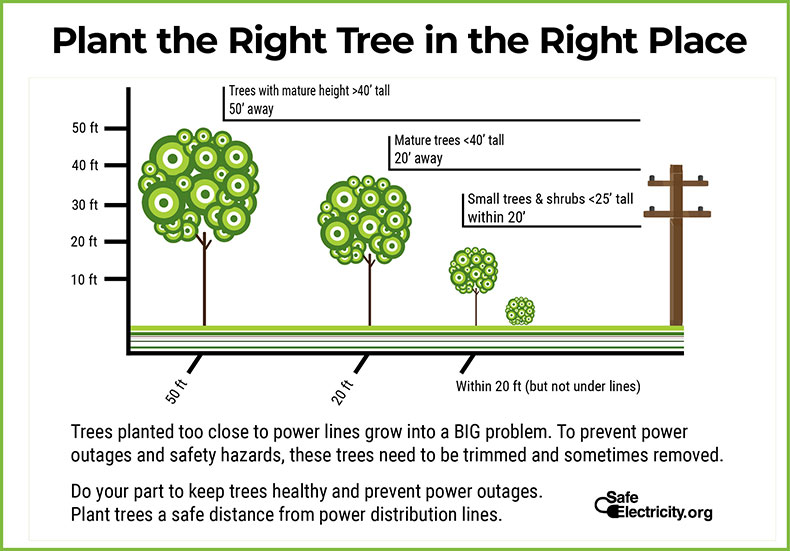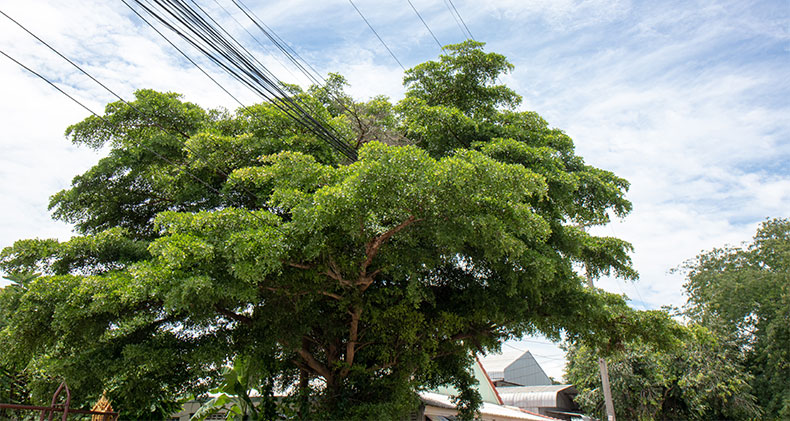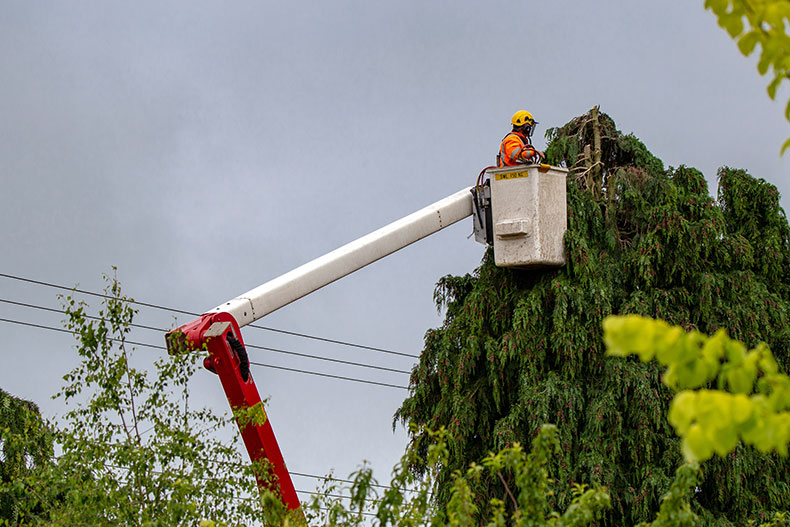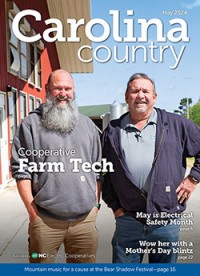If trees are touching power lines in our members’ yards, they can pose a grave danger to families.
Dear Members,

If there’s one topic in utility operations that places our members on opposite ends of the spectrum, it’s vegetation maintenance near power lines. As our contract right-of-way crews travel throughout the system performing the scheduled tree maintenance rotation, some members think we do not trim enough, and some members think we trim too much.
Randolph EMC has over 3,600 miles of overhead power lines in our five-county service area. We try to strike the right balance by appropriately maintaining tree growth in the established right-of-way and by being considerate of the members who have trees growing under and near the power lines. But we must maintain the tree growth because of the following three main factors.
Safety
First and foremost, we care about our members and put their safety and that of our line personnel above all else. Overgrown vegetation and trees pose a risk to power lines.
For example, if trees are touching power lines in our members’ yards, they can pose a grave danger to families. If children can access those trees, they can potentially climb into a danger zone. Electricity can arc, or jump, from a power line to a nearby conductor like a tree.
In addition, during severe weather events, a proactive approach diminishes the chances of having more complicated and dangerous restoration situations because of fallen branches or trees on the lines. Always remember, never go near a downed power line or a tree that is near or touching a power line. The line could still be energized, and it is not considered dead until our crews have tested and grounded it.
Reliability
Trees and power lines do not mix well. One of the biggest benefits of a structured vegetation management program is reliability. Strategic tree trimming reduces the frequency of downed lines causing power outages.
All our transmission and distribution circuits are on a cycle rotation for right-of-way maintenance. On some of our maintenance cycles, this includes side trimming the trees growing adjacent to the power lines, managing the vegetation growing under the lines, or both.
Your cooperative heavily invests each year to control tree growth. For 2021, our right-of-way budget was more than $3.6 million, the largest single line item in our maintenance budget.
Even with our aggressive right-of-way maintenance program, trees are the number one reason, by far, for power outages on an annual basis. For 2020, almost one half of power outages were due to trees falling onto the lines. Most tree-related outages occur during storm events, heavy rainstorms and in windy conditions.
Affordability
As you know, Randolph EMC is a not-for-profit cooperative, and that means we strive to keep our costs in check to keep our rates affordable. This includes our approach to vegetation management.
If trees grow too close to power lines, the potential for expensive repairs also increases. Effective tree trimming and other vegetation management efforts keep costs down for everyone in the long run.
Many utilities will reduce their right-of-way budget for short-term gains. We believe this is short-sighted and it will ultimately lead to additional outages and higher costs in the future. It’s “pay a little now or pay a lot more later” regarding a utility and its tree growth maintenance.
You can assist us in this effort. Whether planting trees to provide a windbreak, shade, or to beautify your landscape, it’s important to plant tall-growing trees safely away from power lines. When landscaping near a power line, take the time to research tree selections by consulting your local arborist, a tree nursery, or call one of our offices for assistance in designing a beautiful, shade-filled yard with trees appropriate for each area. Below, we’ve included a handy guide for planting the right tree in the right place, as well as information about our Trade-a-Tree program.
We appreciate the beauty and benefits that trees provide, but we also know our communities depend upon us to provide reliable and affordable energy. Through proper vegetation management, we can keep the power lines clear, prepare for future weather events and secure the reliability of the grid. We appreciate the opportunity to serve you.
Cooperatively Yours in Safety,

Dale F. Lambert Chief Executive Officer

Trade In Problem Trees for Safety, Reliability
Randolph EMC has a rigorous right-of-way maintenance program to keep tree limbs from growing too close to primary lines. If you find that the cooperative is frequently having to trim trees on your property, Randolph EMC’s Trade-A-Tree program might be right for you.
The Trade-A-Tree program allows members who have trees growing into primary power lines to “trade” the problem tree for a tree that is suitable to plant near power lines. If you think you might qualify for this program, simply contact REMC by phone to schedule a visit to your property.
We will work with you to select a different type of tree at a reasonable cost and a suitable location for it. Once you’ve purchased and planted the tree, a REMC representative will inspect the placement on your property. If everything is in order, simply provide us a receipt and we will reimburse you for the cost of the tree or shrub and a reasonable rate of labor for planting it.
Learn more about Randolph Electric's vegetation management program.



